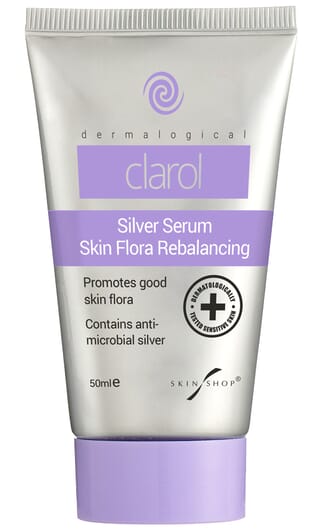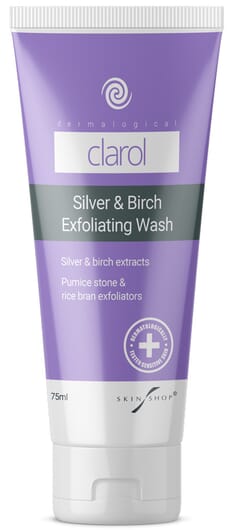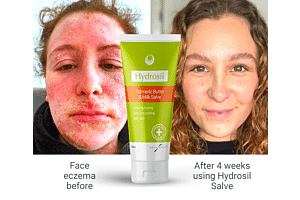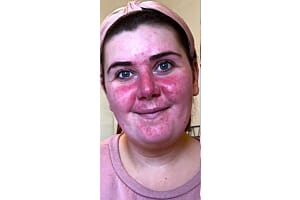Advice and products about getting rid of acne generally focus around aggressive forms of attacking the acne itself, with little regard for what damage this does to healthy skin.
Acne medications focus on killing all skin bacteria with the aim to reducing acne. Antibiotics for acne also kill off ski bacteria to reduce acne. But in killing off skin bacteria, good skin bacteria is also wiped out. Even over the counter products for acne focus on strong antibacterial actions, with no discrimination between healthy skin bacteria and the bacteria that causes acne. The problem is that when healthy skin is constantly under attack from anti-bacterial agents and disinfectants, it gradually becomes weaker and less resilient, meaning the next acne outbreak is often worse and more wide spread.
This damaging cycle of treatments and ever more intense break outs often becomes the long-term pattern for many adult acne sufferers, leaving skin weak, dry and over sensitive and ultimately never really solving the initial problem of the acne itself. Like all entrenched wars, something needs to break the pattern of conflict. The skin actually has its own defences against acne, but these are often worn down by the long-term use of repeated acne treatments. However, by building up these depleted acne defences, the skin can start to defend itself against acne break outs.
The three key ways to re-build the skin’s acne defences are; Increase good skin bacteria Skin treated with regular anti-bacterial agents, be it medications or medicated creams or washes, will typically have very low levels of good skin bacteria. By giving the skin a break from anti-bacterial treatments and focusing on building back up the skin’s levels of good skin bacteria can just tip the balance in the skin’s ability to fight against acne. Clarol Skin Flora Re-Balancing Serum, which contains an ingredient called Microsilver™ that is basically food for good skin bacteria. This ingredient helps good skin bacteria to flourish while starving out bad skin bacteria. Keep sebum pure Acne medications such as Roaccutane work by reducing sebum production. While this may help reduce acne, reducing sebum also causes skin to become very dry. The results of prolonged dryness is a weakened skin barrier function that can lead to cracks and abrasions that then let more bad skin bacteria through the skin’s surface through these weakened areas. The more bad skin bacteria that gets into the skin, the greater the risk of more severe acne break outs. Therefore, when the acne medication or treatment is stopped, the bad skin bacteria rushes in to the weakened areas of skin and wreaks havoc. Sebum is the skin’s natural moisturiser. It helps keeps skin flexible and more resilient to dryness and damage. The problem is with skin prone to acne, the excess sebum typically produced in acne prone skin then oxidises as it nears the skin’s surface and becomes ‘rancid’ which is what leads to deeper more cystic type acne lesions. So, while sebum is crucial to keep skin resilient against further acne attacks, it also the cause of the acne in the first place. This seems to be a catch 22 situation. However, if the excess sebum is prevented from oxidisation it’s no longer a problem, in fact it’s a bonus.
So how's it possible to stop sebum becoming rancid?
Clarol’s Sebopure contains a new patented ingredient taken from mustard leaf extract called Pixalia ™ that works as a sebum preserver. By preserving the sebum as it nears the skin’s surface, the process of oxidisation is interrupted. Much like preservatives that we put in jams to stop them going off once the lid is opened, Sebopure helps prevent oxidisation of sebum as it mixes with air as it reaches the skin’s surface. Through this method of sebum preservation, the skin can produce as much sebum as it likes to help protect it, but that sebum poses less of a risk of causing pore blockages if its preserved as it pushes out through the skin pore. Exfoliate for new cell growth & dilate open pores Bad skin bacteria grows and exists in the upper level of epidermis while good skin bacteria tends to exist in a deeper level. Gentle regular exfoliation is a key factor to removing bad skin bacteria and helping skin to re generate more quickly. The action of gently buffing away dead skin cells clears our pores of debris that are food for surface bad bacteria. However using anti-bacterial scrubs can remove most of the good skin bacteria sitting deeper in the pore that skin needs to fend off acne. So ideally an exfoliant that does its job as an exfoliant but that does not remove good skin bacteria is key if the aim is to build up the skin’s good skin flora. Clarol’s Silver & Birch Exfoliating Wash contains Birch Bark plus other good skin bacteria promoting ingredients to treat acne-prone skin.
Birch Bark contains natural equivalents of both salicylic acid and methyl salicylate, two synthetic chemicals commonly used in anti-acne products. Birch Bark detoxifies and cleanses the skin but does not kill of good skin bacteria. Pumice Stone and Rice Bran are also used to naturally and effectively exfoliate and remove dirt and dead skin cells. Birch Bark also contains betulin to help reduce inflammation in acne-prone skin and Lupeol and Erythrodiol which studies prove can help increase the production of proteins in skin cells to speed up the skin healing process. Extracts of Coffee Seed extract helps dilate open pores, so that once the pores have been cleaned, the pore then dilates keeping out new sources of bad bacteria. Silver & Birch Exfoliating Wash also contains MicroSilver ™, a food for good skin bacteria. Via these three methods the skin’s natural acne defences are bolstered, helping the skin to fend of acne attacks on its own via improving the integrity and quality of the skin itself rather than attacking it with anti-bacterial agents which runs the risk over time of fundamentally damaging and weakening it.










